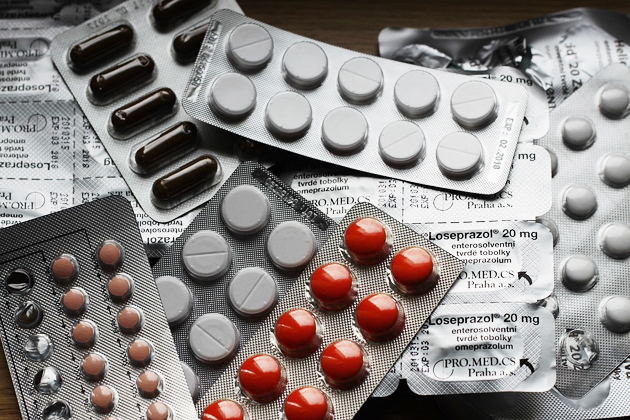Antitubercular Drugs
Tuberculosis (TB) is a bacterial infection caused by a germ called Mycobacterium tuberculosis. The bacteria usually attack the lungs, but they can also damage other parts of the body. TB spreads through the air when a person with TB of the lungs or throat coughs, sneezes or talks.
The whole 26 pages article is available for download here.
You are more likely to get TB if you have a weak immune system. If not treated properly, TB can be deadly. You can usually cure active TB by taking several medicines for a long period of time. People with latent TB can take medicine so that they do not develop active TB.
ISONIAZID
Isoniazid is recommended for all forms of tuberculosis in which organisms are susceptible. However, active tuberculosis must be treated with multiple concomitant antituberculosis medications to prevent the emergence of drug resistance. Single-drug treatment of active tuberculosis with isoniazid, or any other medication, is inadequate therapy. Isoniazid is recommended as preventive therapy for the following groups, regardless of age.
1. Persons with human immunodeficiency virus (HIV) infection ( 5 mm) and persons with risk factors for HIV infection whose HIV infection status is unknown but who are suspected of having HIV infection.
Preventive therapy may be considered for HIV infected persons who are tuberculin-negative but belong to groups in which the prevalence of tuberculosis infection is high. candidates for preventive therapy who have HIV infection should have a minimum of 12 months of therapy.
2. Close contacts of persons with newly diagnosed infectious tuberculosis 5 mm). In addition, tuberculinnegative (< 5 mm) children and adolescents who have been close contacts of infectious persons within the past 3 months are candidates for preventive therapy until a repeat tuberculin skin test is done 12 weeks after contact with the infectious source. If the repeat skin test is positive (> 5 mm), therapy should be continued.
3. Recent converters, as indicated by a tuberculin skin test ( 10 mm increase within a 2 -year period for those < 35 years old 15 mm increase for those 35 years of age). All infants and children younger than 4 years of age with a > 10 mm skin test are included in this category.
4. Persons with abnormal chest radiographs that show fibrotic lesions likely to represent old healed tuberculosis ( 5 mm). Candidates for preventive therapy who have fibrotic pulmonary lesions consistent with healed tuberculosis or who have pulmonary silicosis should have 12 months of isoniazid or 4 months of isoniazid and rifampin, concomitantly.
5. Intravenous drug users known to be HIV-seroneg-ative ( > 10 mm).
6. Persons with the following medical conditions that have been reported to increase the risk of tuberculosis (10 mm): silicosis; diabetes mellitus; prolonged therapy with adrenocorticosteroids; immunosuppressive therapy; some hematologic and reticuloendothelial diseases, such as leukemia or Hodgkin's disease; end-stage renal disease clinical situations associated with substantial rapid weigh loss or chronic undernutrition (including: intestinal bypass surgery for obesity, the postgastrectomy state (with or without weight loss), chronic peptic ulcer disease, chronic malabsorption syndromes, and carcinomas of the oropharynx and upper gastrointestinal tract that preven adequate nutritional intake). Candidates for preventive therapy who have fibrotic pulmonary lesions consistent with healed tuberculosis or who have pulmonary silicosis should have 12 months of isoniazid or 4 months of isoniazid and rifampin, concomitantly.
DOSAGE
Adults: 5mg/kg up to 300 mg daily in a single dose; or 15 mg/kg up to 900 mg/day, two or three times/week.
Children: 10-15 mg/kg up to 300 mg daily in a single dose; or 20-40 mg/kg up to 900 mg/day, two or three times/week.
Patients with Pulmonary Tuberculosis Without HIV Infection: There are 3 regimen options for the initial treatment of tuberculosis in children and adults:
Option1: Daily isoniazid, rifampin, and pyrazinamide for 8 weeks followed by 16 weeks of isoniazid and rifampin daily or 2-3 times weekly. Ethambutol or streptomycin should be added to the initial regimen until sensitivity to isoniazid and rifampin is demonstrated. The addition of a fourth drug is optional if the relative prevalence of isoniazid-resistant Mycobacterium tuberculosis isolates in the community is less than or equal to four percent.
Option 2: Daily isoniazid, rifampin, pyrazinamide, and streptomycin or ethambutol for 2 weeks followed by twice weekly administration of the same drugs for 6 weeks, subsequently twice isoniazid and rifampin for 16 weeks.
Option 3: Three times weekly with isoniazid rifampin, pyrazinamide, and ethambutol or streptomycin for 6 months.
All regimen given twice weekly or 3 times weekly should be administered by directly observed therapy (see also Directly Observed Therapy below).
The above treatment guidelines apply only when the disease is caused by organisms that are susceptible to the standard antituberculous agents. Because of the impact o resistance to isoniazid and rifampin on the response to therapy, it is essential that physicians initiating therapy for tuberculosis be familiar with the prevalence of drug resistance in their communities. It is suggested that ethambutol not be used in children whose visual acuity cannot be monitored.
The whole 26 pages article is available for download here.

